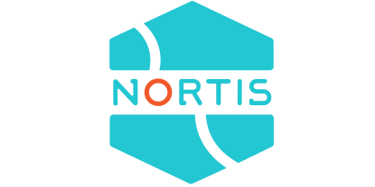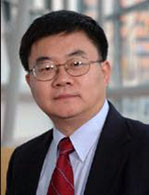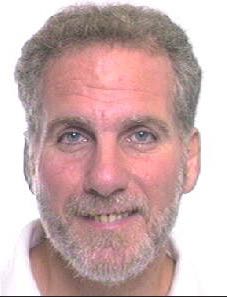07:30 | Morning Coffee, Breakfast Pastries, and Networking |
|
Session Title: Deriving Value from Organs-on-Chips and 3D-Cultures |
| |
08:00 | Digital Magnetophoresis for Rare Cell Collection and their Logical Manipulation
Cheolgi Kim, Professor, Daegu Gyeongbuk Institute of Science and Technology (DGIST), Korea South
The ability to manipulate individual cells has profound applications for gene sequencing, single cell analysis for their heterogeneity based on cell separation technology. Even though, various single cell platforms are exit, it is still challenge to collect rare cells and their digital manipulation in large-scale. Here, we demonstrate a class of integrated magnetic track circuits for executing sequential and parallel, timed operations on an ensemble of single particles and cells. The magnetic tracks are fabricated by lithographic technology. These magnetic tracks used for the passive control of cells/particles similar to electrical conductor, diodes and capacitor. When the magnetic tracks are combined into arrays and driven by rotating magnetic field, the single cells are precisely control for multiplexed analysis. In addition, the concentric cell translocation and separation were performed by the assembly of this magnetic track into a novel architecture, resembled with spider web network, where all the cells are concentrated into one position and then transported to apartments for the single cell analysis. |
08:30 | Raman Imaging and Beat Profiling of the Pharmacological Reaction of Neonatal Rat Cardiomyocytes in a Centrifugal Microfluidic Chip
Wilfred Espulgar, Research Fellow, Osaka University, Japan
Raman images and beat profiles of neonatal rat cardiomyocytes trapped in a centrifugal microfluidic chip applied for pharmacological reaction study. |
09:00 | Inflammation on a Chip
Daniel Irimia, Associate Professor, Surgery Department, Massachusetts General Hospital (MGH), Shriners Burns Hospital, and Harvard Medical School, United States of America
|
09:30 |  Technology Spotlight: Technology Spotlight:
Tissue Engineered Vascularized Tumor Micro-environments for Preclinical Testing of Anticancer Therapeutics and Toxicology
Henning Mann, Senior Research Scientist, Nortis, Inc.
Nortis provides microfluidic chips for tissue engineering 3D-vascularized tissue micro-environments. Endothelial vessels induced to sprout in response to growth factors create a vascular network that invades tumor tissue. The model can be used to test anticancer therapeutics but can also be applied to the generation of organ-specific vascular and tissue micro-environments.
|
10:00 |  Technology Spotlight: Technology Spotlight:
3D Printing in Biocompatible Polymers
Richard Gray, Regional Director, Blacktrace, Inc.
3D printers must overcome two significant challenges to address applications in Life Science – first, being able to print using biocompatible FDA approved materials, and second, being able to print leak-proof microfluidic channels and structures. This presentation describes development of Dolomite’s Fluidic Factory, which can print fluidically sealed parts in COC in minutes. Key product technologies will be described, and examples of applications in life sciences will be given.
|
10:30 | Coffee Break and Networking in the Exhibit Hall |
11:00 |  | Keynote Presentation Integration of Cells with Silicon Devices for the Development of Functional Organ-on-a-Chip Systems for Preclinical Drug Discovery and Toxicology
James Hickman, Professor, Nanoscience Technology, Chemistry, Biomolecular Science and Electrical Engineering, University of Central Florida; Chief Scientist, Hesperos, United States of America
One of the primary limitations in drug discovery and toxicology research is the lack of good model systems between the single cell level and animal or human systems. In addition, with the banning of animals for toxicology testing in the EU, the development of body-on-a-chip systems to replace animals with human mimics is essential for product development and safety testing. Our research focus is on the establishment of functional in vitro systems to address this deficit where we seek to create organ mimics and their subsystems to model motor control, muscle function, myelination and cognitive function, as well as cardiac conduction and force generation. The idea is to integrate microsystems fabrication technology and surface modifications with protein and cellular components, for initiating and maintaining self-assembly and growth into biologically, mechanically and electronically interactive functional multi-component systems in a circulating serum-free medium. Our philosophy is to start with 2D systems and only add complexity as needed to address biological questions to keep cost of the system at a minimum. We are using this ability to manipulate biological systems and integrate them with silicon-based systems to create body-on-a-chip systems for high content drug discovery. Examples will be given of some of the more advanced body-on-a-chip systems including a recent 4-organ system, neuromuscular junction system, and integrated cancer subsystems that are being developed as well as the results of five workshops held at NIH to explore what is needed for validation and qualification of these platforms. |
|
11:30 |  | Keynote Presentation Multi-Organ-Chip Developments: Towards a Paradigm Shift in Drug Development
Reyk Horland, CEO, TissUse GmbH, Germany
Present in vitro and animal tests for drug development do not reliable predict the human outcomes of tested drugs or substances because they are failing to emulate the organ complexity of the human body, leading to high attrition rates in clinical studies. Here, Multi-Organ-Chips provide high potential for the in vitro combination of different cell types and organoids to realize a better understanding of their physiological in vivo crosstalk. The expectation is that such tests would predict, for example, toxicity, immunogenicity, ADME profiles and efficacy in vitro, reducing and replacing laboratory animal testing and streamlining human clinical trials. The ultimate aim for microphysiological systems in drug development is to recapitulate the various stages of a disease and even understand the stages before the disease is clinically manifested, which may open the way for new treatment paradigms. This talk will present examples of current Multi-Organ combinations and how the advanced knowledge and experience acquired will eventually enable the development of a Body-on-a-chip system. In addition, the question of how to qualify and validate these systems will be addressed. |
|
12:00 | Advanced Integrated Optical Oxygen and pH Sensors for Organ-on-Chip Applications
Torsten Mayr, Associate Professor, Leader-Applied Sensors, Graz University of Technology Austria, Austria
Integrated optical oxygen and pH sensors are presented enabling
monitoring of oxygen content and pH changes in microfluidic cell
cultures or organ on chips with a high precision read-out. |
12:30 | Networking Lunch in the Exhibit Hall: Visit Exhibitors and Poster Viewing |
|
Session Title: Emerging Technologies Session |
| |
13:30 |  | Keynote Presentation Bioprinting 3D Tissues on Perfusable Chips
Jennifer Lewis, Professor, Harvard University School of Engineering and Applied Sciences, United States of America
The advancement of tissue and, ultimately, organ engineering requires the ability to pattern human tissues composed of cells, extracellular matrix, and vasculature with controlled microenvironments that can be sustained over prolonged time periods. To date, bioprinting methods have yielded thin tissues that only survive for short durations. To improve their physiological relevance, we report a method for bioprinting 3D tissues on perfusable chips. Specifically, we will describe the bioprinting of thick vascularized, stem-cell laden tissues that can be controllably perfused and differentiated along an osteogenic lineage on chip. We will then describe how this approach can be extended to create other functional tissue constructs, such as 3D proximal tubules, on chip for drug screening. Our approach combines bioprinting, 3D cell culture, and tissue-on-chip concepts opening new avenues for drug screening, disease models, and ultimately tissue repair and regeneration. |
|
14:00 |  | Keynote Presentation Bioprinting In vitro Tissue Models: Challenges and Opportunities
Wei Sun, National “Thousand-Talent” Distinguished Professor, Tsinghua University; Albert Soffa Chair Professor, Drexel University, China
3D Bio-Printing uses cells, biologics and/or biomaterials as building block to fabricate personalized 3D structures or functional in vitro biological models for regenerative medicine, disease study and drug discovery. This presentation will review some recent advances on 3D Bioprinting. Applications of using bioprinting technology for fabrication of tissue engineering model, drug testing model and cancer tumor model will be given, along with discussions for challenges and opportunities in the field of Bio-3D Printing. |
|
14:30 | Combining Microtissue Spheroids and Integrated Microfluidic Technology for Parallelized Micro-physiological Systems
Olivier Frey, Vice President Technologies and Platforms, InSphero AG, Switzerland
The presentation will focus on recent developments and experimental results combining spherical microtissues with integrated microfluidic technology for creating microphysiological multi-tissue systems. I will highlight, why spheroids as a 3D cell culturing model are suitable for such application and how we implemented their integration into microfludic culturing systems for automated parallelized assays bearing high flexibility in application, robustness and usability. Further, the implementation of microsensors and pumps will be presented and discussed. |
15:00 | Reconstitution and Visualization of Tumors-on-Chip for Precision Medicine
Maria Carla Parrini, Senior Research Engineer, Institut Curie, France
Tumor microenvironments are ecosystems composed of a variety of cell types positioned in complex physicochemical contexts. We generated microfluidic devices in which highly-controlled cell co-cultures reconstituted a breast tumor ecosystem (Her2+ sub-type), containing cancer cells, cancer-associated fibroblasts, endothelial cells, and immune cells. We succeeded in recapitulating on these tumors-on-chip the immune-dependent systemic response to a drug used in clinic, the Trastuzumab monoclonal antibody (Herceptin®). This approach provides a novel experimental system to understand the complex effects of Trastuzumab on the tumor microenvironment and, very importantly, to investigate its resistance mechanisms. We are currently working toward the personalization of these tumors-on-chip by the introduction of patient-derived cells in the perspective of personalized diagnostic and precision medicine. |
15:30 | Human Disease Model to Study Vascular Healing of Coronary Arteries
Volkert van Steijn, Assistant Professor, Delft University of Technology, Netherlands
Cardiovascular disease, the leading cause of death in the world, is often treated by drug eluting stents (DES) to re-open blocked arteries. However, stents damage the artery wall leading to scar formation and delayed healing. Goal: To develop an in vitro model of diseased arterial wall allowing serial and longitudinal in vitro screening of new treatment modalities. Approach: The device consists of two parallel microfluidic channels separated by a thin porous polymeric membrane. Endothelium is grown on one side and smooth muscle cells contralateral. Once the endothelium is confluent and the thickness of the smooth muscle cell layer resembles a thin fibrous cap (65 micrometer), a wound is created by laser ablation and DES treatment is mimicked. Then, using time-lapse confocal microscopy, endothelial and smooth muscle cell responses are revealed. Results: A thorough analysis is presented on the development of the fibrous cap inside the microfluidic device and it is shown how the thickness of the smooth muscle layer increases in time over a period of 28 days. Then, it is shown how to create a wound of controlled size and shape in the endothelium and how the endothelial and smooth muscle cells repair the wounded area. |
16:00 | Close of Track |











